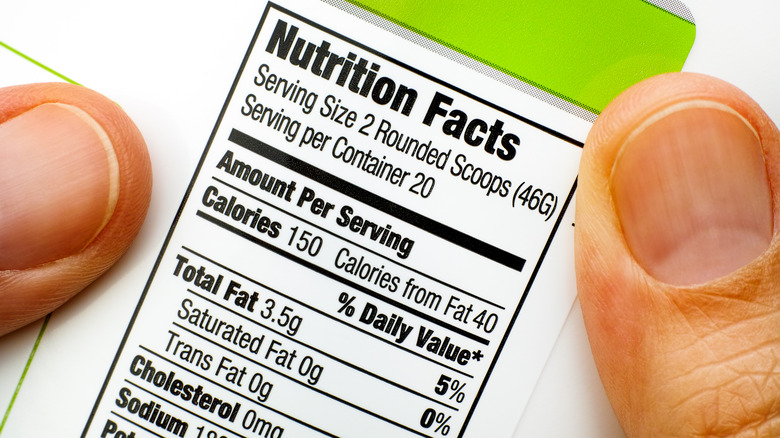Stop Believing This Processed Food Myth
Processed foods have a notoriously bad rep for being unhealthy and often are the first ones to be eliminated from your diet if you're trying to eat healthier. However, if you think that all processed foods are bad, simply because they're processed, you might be surprised to find otherwise.
It's important to know what it means to say that a particular food is processed. According to the Academy of Nutrition and Dietetics, processed food is any food that has had a change in its nutritional profile. While frozen, canned, and packaged foods definitely classify as processed foods, even cooking something or chopping it classifies as processing. The apple on your plate that you just sliced is technically now a processed food, too.
Not all processed foods are unhealthy. On the contrary, the Academy of Nutrition and Dietetics says that certain kinds of processing can actually add more nutrition to food. Milk sometimes has some calcium and vitamin D added to it, and cereals can have fiber added to them, making these processed foods good sources of nutrition.
Any food items that have been chopped or prepped in advance count as minimally processed food (via Very Well Fit). Technically, this includes washing fruits and vegetables and slicing them to put into your lunch box. Then come foods that have been processed to retain the peak of their flavor, ripeness, and nutritious value — bags of frozen fruits and canned tomatoes.
How can you tell if a processed food is unhealthy
Here's where the spectrum starts to tip towards the unhealthy side. Some foods are processed to include colors, sweeteners, spices, and preservatives that add flavor, such as jars of pasta sauce and bottles of salad dressing. Then, there are ready-to-eat processed foods like chips, granola, and deli meat. Lastly, there are heavily processed foods, which usually include meals that are pre-cooked and frozen, like microwavable dinners. Soda, candy, and other foods that contain fake coloring, flavors, and preservatives also count as heavily processed.
Considering that just about all foods are processed to a certain extent, it's hard to tell which count as unhealthy. According to Food Network, the best way to tell is by reading the label. Scanning through the ingredient list and the nutrition chart will usually give you a good idea about whether the processed food you're buying is unhealthy and if it is, then to what extent.
Salt, sugar, and fat are some of the most common additions to processed foods that you should look for (via NHS). These ingredients give more flavor to foods, increase shelf life, or add to the structure of foods like bread. However, some processed foods contain a very high amount of salt, sugar, and fat, and you could be consuming way more than the recommended daily intake. You should also be on the lookout for calories and the sodium content of processed food, especially because the latter can be quite harmful if you have high blood pressure.

